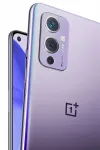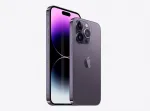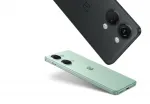The Nokia 5110 is a classic mobile phone that was first released in 1998. As one of the earliest models in the Nokia mobile phone line, it boasts a simple yet sturdy design that has been a hallmark of Nokia devices. With its compact size and basic features, the Nokia 5110 is a great choice for those looking for a reliable mobile phone that gets the job done.
One of the standout features of the Nokia 5110 is its durable build. Weighing in at 170 grams (6.00 ounces), this phone is built to last. Its dimensions of 132 x 47.5 x 31 mm with 143 cc (5.20 x 1.87 x 1.22 inches) make it a convenient size to carry around, while also offering enough surface area for easy handling. With its mini-SIM slot, the Nokia 5110 is able to support various SIM cards, allowing for flexibility in phone carriers.
The phone also comes with a variety of cover options, including basic and metallic options, known as Xpress-On covers. These covers are easily replaceable, providing users with the opportunity to personalize their device and keep it looking fresh.
In terms of connectivity, the Nokia 5110 has limited options. It does not have USB, WLAN, Bluetooth, or even radio capabilities. This means that data transfer and internet connection are not possible with this device. Additionally, it does not have any form of positioning technology such as GPS, making it difficult to accurately determine location. This phone's primary function is for making and receiving calls, with no extra bells and whistles.
On the sound front, the Nokia 5110 has a standard ringing tone feature with six different levels to choose from. However, there is no 3.5mm jack, so using headphones with this device is not an option. Users are limited to monophonic ringtones but have the ability to download new ones if desired. It also does not have a loudspeaker, so calls must be made using the phone's earpiece.
The Nokia 5110 does not have a camera, which is a feature that most modern mobile phones have today. However, this should not come as a surprise given the simplicity of this phone's design and its release date of 1998. Cameras on mobile phones were not yet a widely available feature at that time.
In terms of memory, the Nokia 5110 does not have a card slot, meaning that users are limited to the phone's internal storage of 8 dialed, 5 received, and 5 missed calls. Additionally, the phonebook is based entirely on the SIM card, so only contacts saved on the SIM card will be accessible.
Powered by a removable Li-Po 600 mAh battery, the Nokia 5110 has a standby time of 60-270 hours and a talk time of 3-5 hours. While not particularly long-lasting compared to modern mobile phones, it is still decent for a phone of its time.
The display of the Nokia 5110 is a monochrome graphic type, with a resolution of 5 lines. It also has a "dynamic font size" feature, meaning that the size of the text can be adjusted to the user's preference. This makes it convenient for those with visual impairments.
On the network front, the Nokia 5110 only supports 2G technology with GSM 900 bands, meaning that it is not compatible with modern networks. This is a significant disadvantage for anyone looking to use this phone in today's world, where 3G and 4G networks are the norm.
Other features of the Nokia 5110 include a closed user group function, which allows for communication with a specific group of people, and a basic alarm and clock functions. It also has pre-installed games such as Memory, Snake, and Logic, but no browser, sensors, or Java capabilities. The phone supports 28 languages, making it accessible to users from various regions.
In summary, the Nokia 5110 is a no-frills mobile phone with a durable design and basic features. While it may not be suitable for modern network usage or have all the bells and whistles of modern phones, it is a reliable and convenient choice for those looking for a simple, easy-to-use device.









